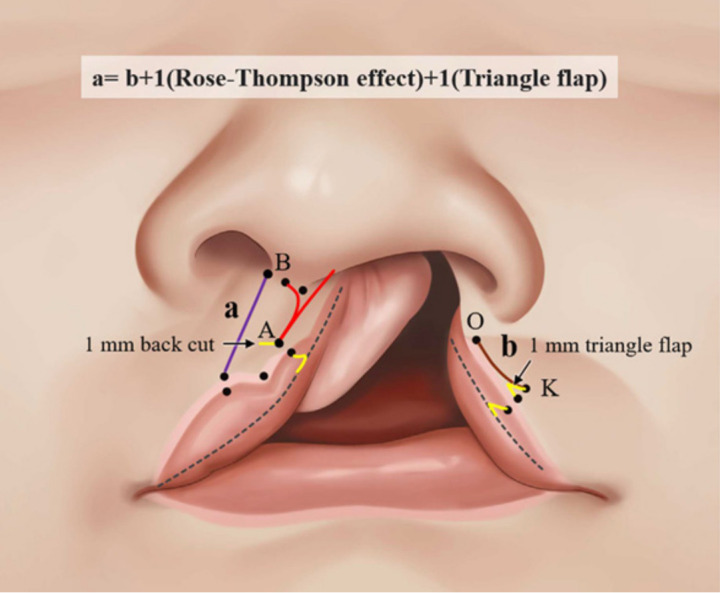Fig. 5.

Schematic illustration of the curved-line cheiloplasty design. Point A represents the lowest point of the non-cleft side philtrum, which is marked on the wire. Point B represents the upper border of the orbicularis oris muscle of the non-cleft side, which is also marked on the wire. Point O corresponds to point B on the cleft side, whereas point K corresponds to point A on the cleft side and forms the upper border of the 1-mm triangle flap. Together, points K and O form the imitated philtrum on the cleft side. Length "a" is the summation of the Rose-Thompson effect and length of the triangular flap added to length "b" (in which “a” represents the philtral height of the non-cleft side flap, and “b” represents the imitated philtral height of the cleft side flap). Reprinted from Cho et al. J Craniomaxillofac Surg 2022;50:561-8, with permission from Elsevier [16].
